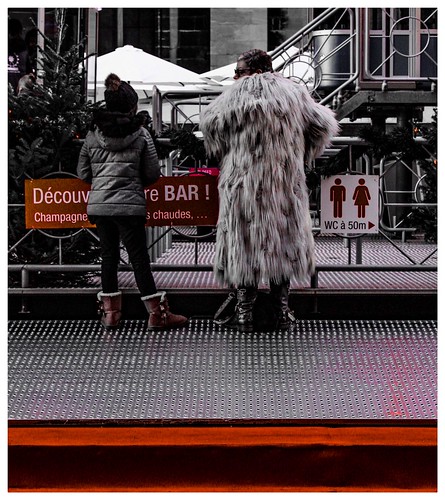SB431542 accelerates reduction of pluripotency DCVC (E-isomer) biological activity markers OCT4 and NANOG to day four, and up-regulation of neural marker MUSASHI to day 4 and SOX1 to working day 8 (B). RT-PCR confirms decline of mesendodermal markers (T, HNF3b) by day eight and absence  of epidermal marker (KRTAP) and trophectodermal markers (bHCG, CDX2) in both handle and SB431542 dealt with cells (B). Quantitative immunohistochemistry confirms considerable acceleration in loss of pluripotency and expression of neural markers when employing SB431542 in contrast to management (C). = p,.05, P,.01, Scale bars: all 100 mm. and trophectodermal markers bHCG and CDX2 (Fig. 1). Quantitative immunohistochemistry confirms accelerated efficient neuralisation with 50.762.% MUSASHI optimistic cells at working day 4 compared to 3.261.two% in handle conditions, and 40.667.% SOX1 constructive compared to negligible SOX1 good cells in the manage group at working day 8. Staining for SOX 1 positivity at day 16 was ninety.461.three% in the SB431542 dealt with cells and 46.467.four% beneath management conditions (Fig. 1C).Despite strong MUSASHI and SOX1 expression, we discovered that addition of SB431542 unsuccessful to induce large ranges of PAX6 expression (six.761% PAX6 constructive cells at day eight compared to 31.263.4% in control problems, Fig. 2C). To examine more the affect of SB431542 on positional identity of neural progenitors we undertook transcriptional profiling of rostro-caudal markers. In addition to constant down regulation of PAX6, SB431542 remedy down-regulated all other anterior markers examined including OTX1, OTX2 and EN2 when in comparison to management circumstances the place these anterior markers are clearly expressed (Fig. 2A&B). Immunohistochemistry of the anterior marker OTX2 unveiled substantial down-regulation in SB431542 treated cells in contrast to control (3.361.4% vs. 33.763.6% in the handle team). In contrast, posterior markers GBX2, HOXB6 and HOXC8 by transcriptional evaluation are strongly expressed in the Figure two. Activin/nodal inhibition using the modest compound SB431542 imposes a posterior positional identification on derived neural progenitors. Beneath control circumstances, transcriptional profiling reveals expression of a assortment of rostro-caudal markers, indicating an heterogeneous positional id of neural precursors (A). Immunohistochemistry confirms the existence of anterior markers PAX6 and OTX2 (A). Treatment with SB431542 causes a significant downregulation of anterior positional markers including PAX6, OTX1, OTX2 and the midbrain marker EN2 by transcriptional analysis and drastically reduced expression of PAX625119295 and OTX2 by immunohistochemistry compared to manage conditions (B&C).
of epidermal marker (KRTAP) and trophectodermal markers (bHCG, CDX2) in both handle and SB431542 dealt with cells (B). Quantitative immunohistochemistry confirms considerable acceleration in loss of pluripotency and expression of neural markers when employing SB431542 in contrast to management (C). = p,.05, P,.01, Scale bars: all 100 mm. and trophectodermal markers bHCG and CDX2 (Fig. 1). Quantitative immunohistochemistry confirms accelerated efficient neuralisation with 50.762.% MUSASHI optimistic cells at working day 4 compared to 3.261.two% in handle conditions, and 40.667.% SOX1 constructive compared to negligible SOX1 good cells in the manage group at working day 8. Staining for SOX 1 positivity at day 16 was ninety.461.three% in the SB431542 dealt with cells and 46.467.four% beneath management conditions (Fig. 1C).Despite strong MUSASHI and SOX1 expression, we discovered that addition of SB431542 unsuccessful to induce large ranges of PAX6 expression (six.761% PAX6 constructive cells at day eight compared to 31.263.4% in control problems, Fig. 2C). To examine more the affect of SB431542 on positional identity of neural progenitors we undertook transcriptional profiling of rostro-caudal markers. In addition to constant down regulation of PAX6, SB431542 remedy down-regulated all other anterior markers examined including OTX1, OTX2 and EN2 when in comparison to management circumstances the place these anterior markers are clearly expressed (Fig. 2A&B). Immunohistochemistry of the anterior marker OTX2 unveiled substantial down-regulation in SB431542 treated cells in contrast to control (3.361.4% vs. 33.763.6% in the handle team). In contrast, posterior markers GBX2, HOXB6 and HOXC8 by transcriptional evaluation are strongly expressed in the Figure two. Activin/nodal inhibition using the modest compound SB431542 imposes a posterior positional identification on derived neural progenitors. Beneath control circumstances, transcriptional profiling reveals expression of a assortment of rostro-caudal markers, indicating an heterogeneous positional id of neural precursors (A). Immunohistochemistry confirms the existence of anterior markers PAX6 and OTX2 (A). Treatment with SB431542 causes a significant downregulation of anterior positional markers including PAX6, OTX1, OTX2 and the midbrain marker EN2 by transcriptional analysis and drastically reduced expression of PAX625119295 and OTX2 by immunohistochemistry compared to manage conditions (B&C).
Heme Oxygenase heme-oxygenase.com
Just another WordPress site
